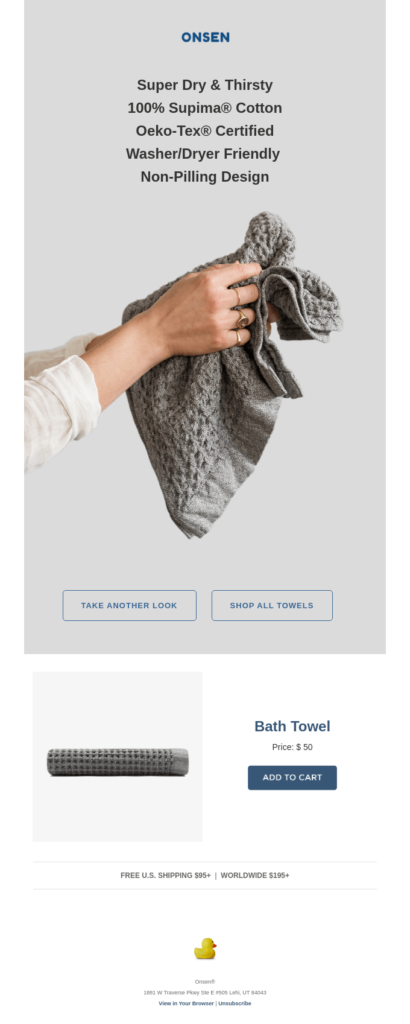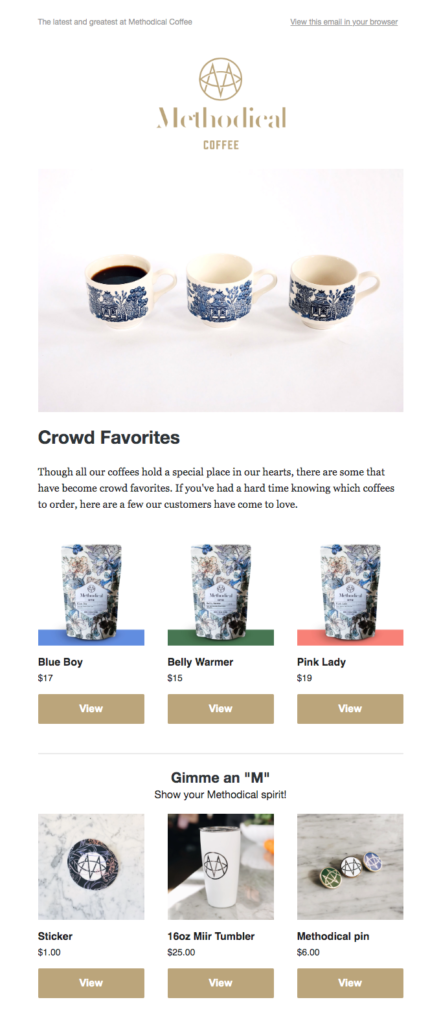Neuromarketing and Email Marketing: the perfect combination

What does psychology have to do with economics? 95%!
This is what behavioral economics theorist Daniel Kahneman claims. Contrary to what one might think, most consumer decisions (about 95%) are influenced by unconscious and irrational processes. The countless stimuli that every user receives on a daily basis (offers, advertisements, newsletters) give rise to completely unconscious sensations, emotions, and desires in the brain, creating irrational associations between the received inputs and triggered needs that are the precise focus of neuromarketing analyses. The enormous advantage of identifying these unconscious associations is that it provides companies with insight into users’ deepest needs and desires, offering a foundation for guiding communication and sales strategies.
This approach has infinite potential and possible applications which are likely still partly unexplored. It can be used to optimize brand image or identify the best choice when redesigning your company logo, as it lets you decipher the unconscious sensations that a brand or a certain color awaken in users. Some companies like Netflix have instead used this approach to predict the success of their TV series, reaching accuracy levels of up to 84%.
The application of neuromarketing to email marketing can be equally advantageous: by intercepting consumer needs even more accurately and identifying the sensations that certain messages trigger on an unconscious level, neuromarketing can be an excellent ally for creating more effective email campaigns.
What is neuromarketing?
Neuromarketing applies the principles of cognitive neuroscience to marketing, using technological aids such as eye-tracking and brain imaging to measure users’ emotional processes and unconscious perceptions when faced with certain stimuli. The ultimate aim is to provide companies with useful insights to direct their marketing campaigns towards satisfying consumers’ irrational desires and needs, which are what guide most purchasing decisions.
Neuromarketing and email marketing: a perfect alchemy for companies
This approach can prove useful in email marketing on several fronts: from choosing a layout to optimizing the subject, from the content and tone to use to the visual elements to include in the body of the email, up to the positioning and message of the call to action.
In fact, eye-tracking measures visual movements to identify the salient elements that capture the consumer’s gaze and determine not only the yield percentages of AdWords ads, but also the elements of an email that the user focused on most when viewing the message.
Another possible application of neuromarketing to emails are persuasion techniques based on neuroscience and on the study of cognitive biases: by considering, for example, that users tend to search for things similar to them, that they are more sensitive to themes and topics they can most identify with and which tend to manifest consistent behaviors, a more targeted and effective communication strategy can be developed.
By using the knowledge that emerges from the application of neuromarketing to email marketing, the choice of words, themes, images, and elements within messages can become even more accurate and personalized based on the trends, interests, and cognitive behaviors of individual users, significantly increasing the effectiveness of the communication strategy.
Tips and strategies for applying neuromarketing to emails
Emotional introduction
By identifying the unconscious processes and emotional reactions to certain stimuli, neuromarketing allows identifying those contents, tones, themes, and visual elements capable of raising the user’s attention levels and leveraging their emotions, thereby facilitating openings and conversions.
Take advantage of the information provided by neuromarketing analyses to refine the first elements of an email seen by a reader:
- optimize the object, choosing effective words capable of triggering an emotional reaction in your users. You can also include emojis that, when chosen carefully, can convey a mood better than any words.
![]()
- insert an image, a GIF, or your brand logo as the first element of the message to capture the user’s attention and pique their curiosity. Our brain processes visual stimuli according to a precise hierarchy (in the order: shapes, colors, images, numbers, and lastly words). This is why we tend to focus more on visual elements such as images, GIFs, and brand logos.
- carefully choose the words and the message to convey as the main content of the email. As with the subject line, using effective words and phrases can facilitate an emotional reaction and encourage reading here, too.

- engage the senses to create an emotional connection with the reader. 75% of shoppers say they prefer to “feel” a product before they buy it. Include elements in your emails that appeal to the five senses using images, gifs, and videos that recall the sensory world.

Social validation
Social validation is one of the six fundamental cognitive strategies used in interpersonal communication, and is the social phenomenon underlying the spread of fashions and trends. In fact, it is based on the principle which says that people seek confirmation of their actions in the choices of their peers, considering the behaviors and choices made by a large number of people more valid.
This cognitive bias can be exploited in email marketing to create a design with greater impact and insert more effective content:
- provide information on the number of people who have purchased a product you offer
- indicate which products or services are the most popular

- insert a box with testimonials talking about their positive experience with your brand
- show positive reviews recommending a given product and the number of users recommending it

Sense of urgency
Another cognitive bias that neuromarketing lets you study and apply to your emails is the scarcity persuasion principle, which says that our brains tend to want things more when they are available in limited amounts and at limited times. In other words, this is the principle whereby last minute offers and limited-time discounts like Black Friday continue to be effective and have a strong impact on our shopping habits.
It is extremely easy to incorporate this principle into your emails: communicate a sense of urgency, provide limited-time offers, and appeal to the human instinct to fear missing out by leveraging the importance of taking advantage of a once-in-a-lifetime opportunity. More specifically?
- insert countdowns that keep engagement high and stimulate the sense of expectation

- add a reference to the offer’s duration directly in the subject line
- indicate the number of products still available above the banner that leads to a product’s purchase page

Call to action
We have seen how neuromarketing, using tools such as the eye-tracker, can help us visually understand where a user’s eye focuses most. Therefore, a first advantage of neuromarketing applied to the CTA is to suggest where to place the call to action button to get more clicks.
Studying the unconscious associations in your database can also let you understand the type of shape and color to choose for a CTA button: colors can awaken certain sensations that only neuromarketing is able to decipher, revealing very different results than the associations that are rationally attributed to certain colors:

Only a specific study of unconscious processes can determine the most authentic, emotional associations between a color and a sensation, which consequently influence the choice to make the decisive click or not.
In fact, a Hubspot study using the A/B test to understand which color worked best for a Call to Action unexpectedly revealed that the color red was more effective, even though it is rationally attributable to stopping, compared to green (about 21%). However, Help Scout points out that the explanation behind this study may not lie in a general preference towards the hue itself, but rather in the fact that the red is more prominent than the body of the email:

This type of conclusion could be confirmed on a scientific basis precisely by neuromarketing, using heat maps to analyze where a reader’s gaze tends to linger most, to compare the visual impact of the two buttons being compared.
Summing up
The integration of psychology and cognitive sciences with marketing is becoming fundamental in order to have concrete, reliable data on which to orientate your strategies and campaigns. The potential of these approaches and the accuracy they allow reaching make the study of the mind and unconscious processes indispensable tools for the marketing of the present and the future. They will increasingly become an integral part of the new methods for analyzing your database.